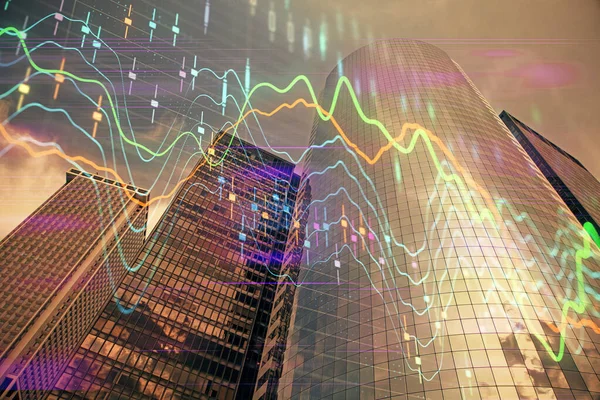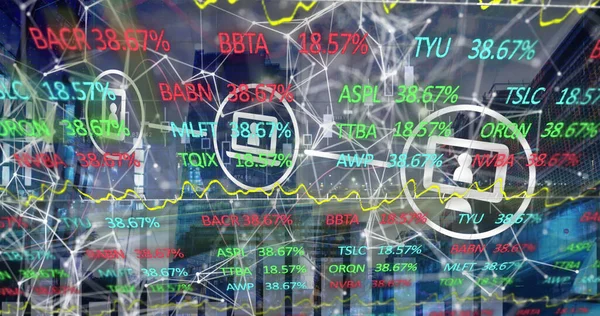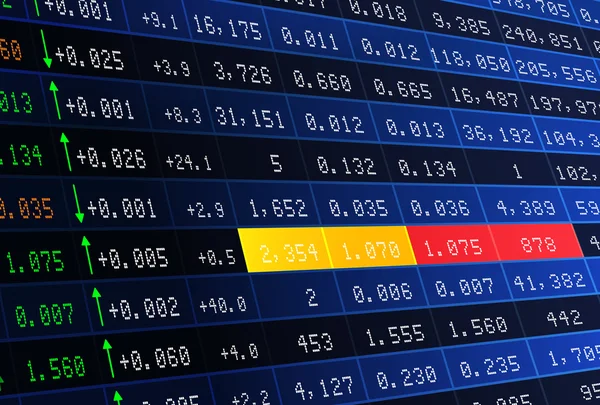In the complex and fast-paced world of foreign exchange (Forex) trading, technology has always played a crucial role. In recent years, one innovation has radically reshaped the trading landscape: High-Frequency Trading (HFT). In this article, we will explore the phenomenon of HFT, examining its role within the Forex market, the technological advancements that make it possible, its pros and cons, its regulatory landscape, and the future prospects of HFT in Forex.
1. Unveiling the Concept: High-Frequency Trading

High-Frequency Trading (HFT) is a form of algorithmic trading characterized by high speeds, high turnover rates, and high order-to-trade ratios. It leverages sophisticated technological tools and computer algorithms to rapidly trade securities. HFT uses proprietary trading strategies carried out by computers to move in and out of positions in seconds or fractions of a second. Its strategies include market making, arbitrage, and momentum trading.
However, it’s worth noting that not all algorithmic trading is high-frequency trading. What distinguishes HFT is the speed and frequency of its operations. It requires a sophisticated technological infrastructure that can execute trades in milliseconds. The primary objective of high-frequency traders is to reap profits from arbitrage opportunities and price imbalances.
2. The Nexus between High-Frequency Trading and Forex Market

The foreign exchange market, being the most liquid and volatile market in the world, is a prime field for HFT. HFT firms benefit from the 24-hour trading cycle, high liquidity, and the possibility of leveraging large positions in the Forex market. They contribute to a significant portion of the trading volume in the forex market, creating a highly competitive and fast-paced trading environment.
High-frequency traders use their advanced technology to quickly detect changes in currency prices, economic indicators, and market news, then swiftly enter or exit trades to capitalize on these changes. This high-speed trading adds another layer of complexity to the already intricate Forex market, influencing price movements and market volatility.
3. Technological Advancements Powering High-Frequency Trading

The rise of HFT is primarily driven by advancements in technology. Key elements include high-speed internet connections, advanced trading algorithms, and cutting-edge hardware. High-frequency traders utilize direct market access (DMA) to place orders directly without broker intervention, reducing execution time and costs.
Advanced trading algorithms analyze market data and execute trades based on predefined conditions. These algorithms can process vast amounts of data in milliseconds, optimizing trade execution and timing. Meanwhile, cutting-edge hardware, such as high-performance servers and co-location services, ensure minimal latency in placing and executing orders.
4. Pros and Cons: Evaluating High-Frequency Trading

Like any trading method, HFT has its merits and demerits. On the plus side, it contributes to more efficient markets by providing high liquidity and reducing bid-ask spreads. It also enhances market pricing mechanisms by rapidly integrating new information into prices.
However, HFT also raises concerns about market stability and fairness. Critics argue that it exacerbates market volatility and could trigger flash crashes, rapid and extreme price swings within a very short period. Also, the use of sophisticated technology creates a barrier to entry, leading to an uneven playing field where HFT firms have an edge over average traders.
| Pros of HFT | Cons of HFT |
|---|---|
| Provides high liquidity | Exacerbates market volatility |
| Reduces bid-ask spreads | Could trigger flash crashes |
| Enhances market pricing mechanisms | Creates a barrier to entry |
5. Regulatory Landscape: High-Frequency Trading in Forex

Given the potential risks and advantages of HFT, it’s a closely watched area by regulators. Regulatory bodies around the world, including the U.S. Securities and Exchange Commission (SEC) and the European Securities and Markets Authority (ESMA), have implemented rules to oversee HFT practices.
These include regulations to prevent market manipulation, ensure transparency, and maintain market stability. However, the decentralized nature of the Forex market and rapid technological advancements make it challenging for regulators to keep pace.
6. Future Prospects of High-Frequency Trading in Forex

Looking forward, HFT is likely to remain a significant force in the Forex market. As technology continues to evolve, we can expect HFT strategies to become even more sophisticated and efficient. However, this evolution will also necessitate further regulatory innovations to ensure that the Forex market remains fair, transparent, and stable.
Additionally, as AI and machine learning continue to advance, they could play a more prominent role in HFT strategies. These technologies can analyze massive amounts of data more efficiently and make more precise predictions, potentially increasing the profitability of HFT.
In summary, high-frequency trading has become an integral part of the Forex market, reshaping the trading landscape with its rapid trades and sophisticated technology. While it has its advantages, such as high liquidity and efficient pricing, it also raises concerns about market stability and fairness. As the technology behind HFT continues to evolve, so too will its impact on the Forex market. Consequently, it’s incumbent upon regulators and market participants alike to understand this powerful trading method and to act to ensure the continued integrity of the Forex market.






It’s good that regulators are working to keep Forex trading fair and stable.
But HFT can also make the market more volatile and unstable.
The future of HFT in Forex will be more advanced with AI and machine learning.
HFT is complex but very important in the Forex market.
High-Frequency Trading in Forex is so fast! It changes the market quickly.
HFT uses a lot of technology like fast internet and good computers.
HFT helps by providing more liquidity and making prices more accurate.
Regulators watch HFT to prevent problems like market manipulation.